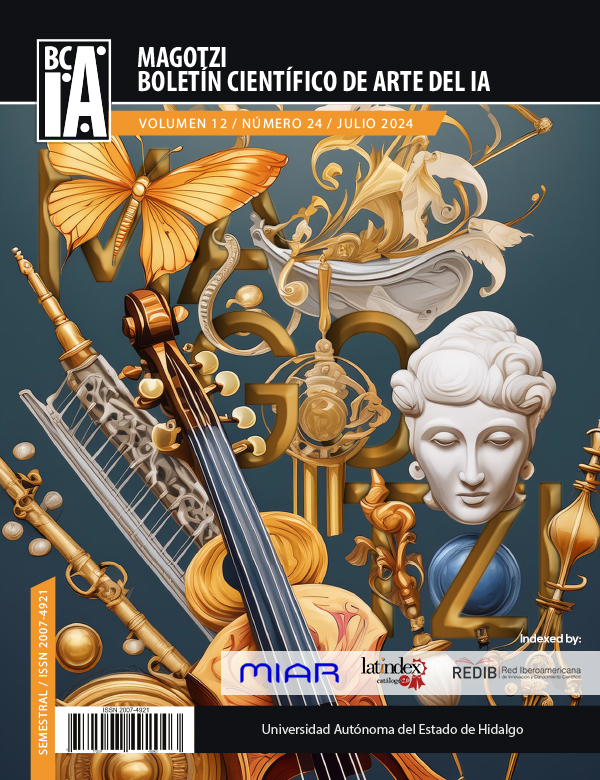Baroque Style keyboard music in the training of the academic pianist:
Gaps, challenges, proposals
DOI:
https://doi.org/10.29057/ia.v12i24.12676Keywords:
Higher education, music education, Baroque Style, piano training, alternative repertoireAbstract
In many institutions of higher education, keyboard music from the 17th and 18th centuries constitutes the didactic-pedagogical corpus that piano teachers can use so that their students can cover the part corresponding to the Baroque Style (1600-1750) and accredit the piano subject in each of career levels. However, although this stylistic period is represented by a plethora of great composers, their works, many of them of great aesthetic quality and tremendous didactic value, have been left aside in many academic programs, or ignored by many piano teachers in favor of the works by Johann Sebastian Bach (1685-1750). In this article, the author presents an overview of the situation described above, provides some data that attests to it and proposes an educational alternative that includes the study and interpretation of some works that allow students to learn first-hand about the life and the work of other baroque composers, explore the different national styles and cover the requirements of each school year perhaps with less demanding works.
Downloads
Publication Facts
Reviewer profiles N/A
Author statements
Indexed in
- Academic society
- N/A
References
Agay, D. (1971). The Baroque Period. An Anthology of Piano Music. Yorktown Music Press.
Bach, C.P.E. (1948). Essay on the True Art of Playing Keyboard Instruments. W. W. Norton & Company.
Castillo, P. (2007). Costumbres de interpretación de la música barroca a partir de los Libritos para el teclado dedicados a Anna Magdalena Bach (1722-1725). Universidad Veracruzana.
Cheng, C. (2019). Baroque Pianism: Perspectives on Playing Baroque Keyboard Music on the Piano, with Emphasis on Bach’s Fugues in the Well-Tempered Clavier [Tesis de Doctorado]. The City University of New York. https://academicworks.cuny.edu/cgi/viewcontent.cgi?article=4447&context=gc_etds
CNM. (2017). Plan de Estudios Licenciatura en Piano. Conservatorio Nacional de Música. https://drive.google.com/file/d/1uzGs84f74_B6U84MJ-k63skg8Zp6KnM4/view
Couperin. F. (2008). Art of Playing the Harpsichord. Alfred Music Publishing.
Ferguson, H. (1975). Keyboard Interpretation From the 14th to the 19th Century: An Introduction. Oxford University Press.
Hinson, M. & Roberts, W. (2013). Guide to the Pianist's Repertoire, Fourth Edition. Indiana University Press.
Hinson, M. (2006). Performance Practices in Baroque Keyboard Music. Alfred Music.
Jiang, Y. (2019). Typical Problems of Piano Playing of Students Majoring in Music in Normal University. Proceedings of the 2019 3rd International Conference on Education, Management Science and Economics (ICEMSE 2019). https://doi10.2991/icemse-19.2019.65
UNAM. (2006). Plan de Estudios de la Licenciatura en Música. Piano. UNAM. https://www.fam.unam.mx/oferta-educativa/licenciatura/mapas/mp-piano.html
Yücetoker, I. (2021). Pedagogical analysis of the baroque period piano repertoire: example of Italy. International Education Studies; 14(11), 19-30. https://doi:10.5539/ies.v14n11p19



















